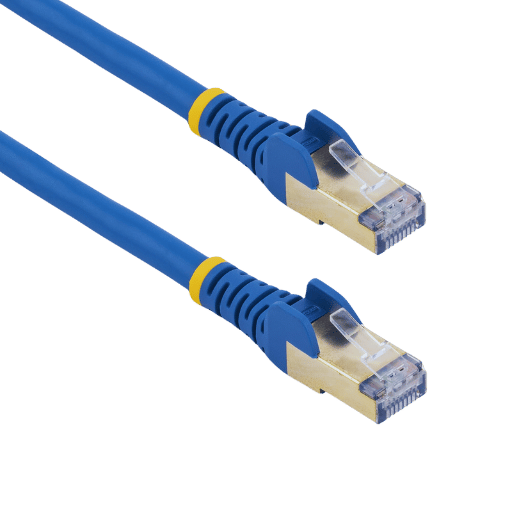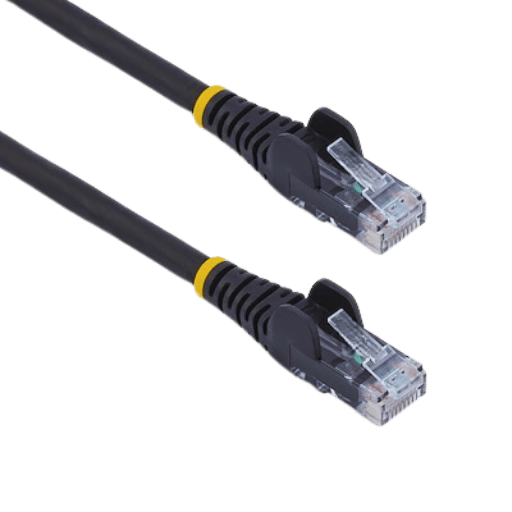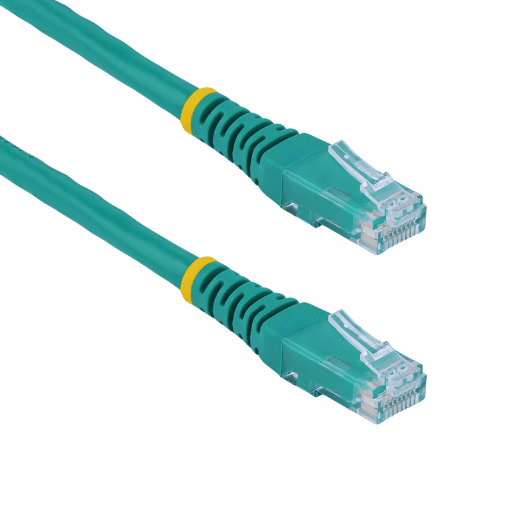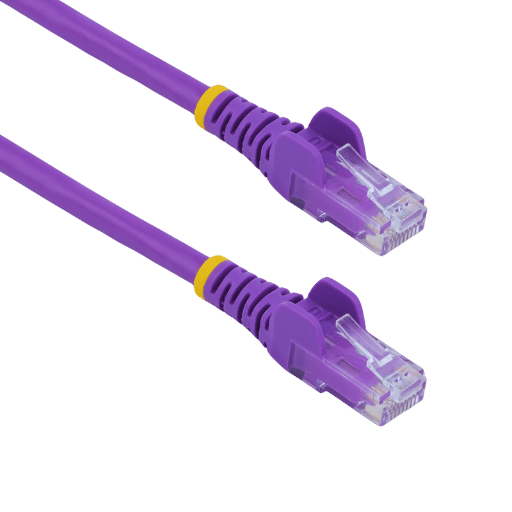As we are now fully entrenched in digital systems, it is critical to invest in quality infrastructure or Ethernet networks. Whether it’s a home office, gaming, or streaming setup, the use of an appropriate Ethernet cable is helpful. This blog seeks to present detailed information regarding the ultimate Cat6 Ethernet cable that is 15ft long, its key aspects and features, technical specifications, and most importantly, ‘what kind of connectivity this cable provides’. Given that technology is advancing, and the new generation is always on demand with higher and more available network speeds, it is important to know what a Cat6 Ethernet cable is capable of and, therefore, what benefits it offers. Follow us on this exploration of the technical details that make this particular cable unique and understand how it can revolutionize your connectivity experience.

One of the prominent features of the 15ft Cat6 Ethernet cable is its ability to enhance connectivity performance with precision and speed. It features data transferring speeds of up to 1 Gbps, which is very useful for high-bandwidth activities such as streaming and online gaming. The bandwidth of the cable is rated at 250 MHz frequencies, which makes it effective in data transmission while ensuring low latency levels. Furthermore, the twisted pair design reduces cross-talk and electromagnetic interference, achieving a steady and dependable network connection. The 15ft length is convenient when setting the wire in cases where the range of the cable and signal quality must be balanced. The combination of these features makes sure that performance, which is critical for modern networks, is optimally met.
The Cat6 cable technology stands one step further Enhanced Network Technology. The technology is said to be an improvement of the Cat5 cable standard. To this end, Cat6 cables come with an innovative high precision twisted pair which eliminates crosstalk. Wave strain research was used to develop this cable design, allowing for a maximum transmission speed of up to 10Gbps within a distance of 55m. Therefore, C6 cables are suitable for use both in business and domestic applications.
Another crucial feature of Cat6 technology is its bandwidth which even exceeds 250 MHz. Such advanced bandwidth enables connecting users and their equipment to efficiently distribute local and global information networks. In turn, this allows for HD videos, VoIP calls, and online multiplayer games to be performed without issues. In most cases, Cat6 cables exceed the general requirements. They have thicker wires and enhanced shattering to increase efficiency and quality.
A more in-depth review of numbers demonstrates that Cat6 cables have a high signal-to-noise ratio, which helps in achieving more precise data transmission over a greater range. In addition, they can integrate into existing Cat5e infrastructure, allowing for mixed technology networks. To sum up, Category 6 technology is a reliable and effective solution for the difficulties posed by the entanglement of modern communication requirements.
The snagless design in Ethernet cables helps to overcome the common problem of the latch tabs affixing or snapping during deployment or when the cables are being ordered. Such a feature comes thanks to an additional overlay that does not allow the latch tab of the RJ45 connector to be accidentally caught by other cables or equipment. Moreover, snagless cables help make network installations more durable and reliable by ensuring that the connector is left intact and working, thereby making the installation of cables more efficient. In addition, this design helps to reduce cable management problems in cases where there is a need to plug and unplug cables often, for instance, in a data center or office networking. All in all, ‘snagless’ cables help in achieving good signal quality and low maintenance.
Unshielded Twisted Pairs (UTP) have a major role to play in the world of networking since they are simple, inexpensive, and efficient. Their unshielded construction allows for lower production costs while still achieving decent performance in low electrical interference environments. The twisting of the pairs is necessary for reducing the EMI and crosstalk and makes them suitable for almost every common network application, including LANs in offices and homes. Although UTP cables do not have extra shielding protection, signal quality is preserved for normal installation distances, and they are still popular for their convenience and compatibility.

The 15ft Ethernet cable that consists of Gigabit Ethernet has low latency and high throughput which is important for applications with a high volume of data transfer. It can offer this distance without the risk of degrading network speeds and therefore offers great performance. It reduces transmission lag relative to wireless connections and helps boost the efficiency and stability of the network, making it best suited for demanding high-bandwidth applications.
Near-end crosstalk (NEXT) and Return Loss are the two parameters that must be on an acceptable level when Ethernet cables are utilized. NEXT occurs when some energy of the transmitted signal escapes to one of the neighboring pairs. This in turn, introduces errors in the data transmission types of situations and can be disquieting in high-density networking scenarios. As a solution towards reducing NEXT an advanced design with precisely designed pair twist and conductor spacing is utilized. Such measures can also reduce interactions, which, to a great extent, improve the transmission of signals and the accuracy of data being transmitted.
Return Loss, inversely, estimates how much signal reflection comes from the ineffectively coupled sections of the cable. High return loss will indicate that a large portion of the transmitted signals gets reversed back towards the source which is not quite the most desirable situation as it will weaken the transmitted signals. To alleviate return loss, quality Ethernet cables are designed with constant impedance along their length.
In practical terms, the use of over 15ft Ethernet cable with the latest technology can lead to NEXT above 50 dB and return loss to be less than -20 dB for frequencies up to 100 MHz. These performance figures are viewed as quite good and will ensure that even in adverse conditions reliable and high-speed networks are sustained.
To enhance stability and prevent cables from becoming loose during installation or maintenance, Snagless RJ45 connectors are critical, especially in areas with frequent handling of cables. These connectors come with molded boots that cover the locking tab, preventing it from snagging onto other cables and causing damage during installation or maintenance. Due to the snagless design, the lifespan and functionality of the cables are improved since the stress on the connector tabs is lessened, thus avoiding disconnections in the long term. Since they are shielded from undue pressure, Snagless RJ45 connectors ensure proper data transfer and signal integrity, which makes them suitable for both domestic and commercial networks.

When viewing the infrastructure of a network, the average person may note that a patch cable and an Ethernet cable look the same, but they do not. A patch cable is a short Ethernet cable that connects devices to network patch panels, whereas a standard Ethernet cable connects switches, routers, or computers to wide area networks.
If you look closely at a patch cable, you will notice that a lot of them are made with stranded conductors. Because of this design characteristic, there is greater resilience in the cable, such that movement and handling of a patch cable will not easily break it. Interestingly, standard ethernet cables will normally operate well with solid conductors for long-haul applications and are able to transmit signals effectively.
The length of these cables is of the utmost importance. A patch cable’s length stretches from between one to five meters while an Ethernet cable can extend to over one hundred meters without significant signal loss due to the solid conductor.
There is another difference between patch cables and Ethernet cables that will be noted in their applications: a patch cable is more useful in a Local Area Network while an Ethernet cable is more applicable over multi-covered areas of a network system.
Given these structural and usage differences, network professionals should select what kind of cables to use, namely patch cables or Ethernet cables, to achieve the desired connectivity in a given situation.
The utilization of Cat6 patch cables has increased among users in recent times because such cables have many benefits in data transmission and these include improvement in network reliability and efficiency. To begin with, however, they have much higher bandwidth, up to a maximum of 250 MHz, which facilitates faster transmission and lowers latency in network applications. This eases fast operations and makes Cat6 patch cables suitable for applications and environments that require short and intense streams of data flow. Secondly, these cables also have the ability to support gigabit Ethernet, which enables these cables to carry data rates of up to 10 Gbps for short distances, which is very important in high bandwidth operations. Further, as has been discussed above, Cat6 patch cables possess advantages in shielding compared with older generations of wires, thereby reducing the risk of electromagnetic interference and minimizing the risk of crosstalk, thus providing reliable data and good connections over a local area network. The attributes of Cat6 patch cables make such cables the optimal choice for the more modern, arguably faster networks.
The Cat6 ethernet cables have a snagless design, which prevents damage to the connector tab while plugging or unplugging the ethernet cable, even in environments that require constant plugging and unplugging. As a result, the durability of the cable increases considerably, and a consistent, reliable connection can be achieved. ETL verification refers to a rating that signals that the Cat6 and other ethernet cables meet superior safety and performance rating requirements determined by Intertek, which build trust when these cables are utilized in critical networks. These features together make the Cat6 snagless and ETL-verified cables an ideal solution for high-speed data applications, where the cost of downtime and compliance are critical.

The 15ft ethernet cables are the best fit as they do not cause any overheating or loss of performance while providing flexibility for connecting devices within a home. There is enough reach for setting up networks around the home as one can plug the router computer, or any other device located in a different room without the need for excessive wires. This particular length facilitates the conduction of high-speed transfers, which is suitable for the proportionate activities that can be done on the home network.
Using a 24 AWG (American Wire Gauge) copper wire for rolling Ethernet cables is very important to achieving the correctness and performance of the cable in many network applications. Since copper is a metal, it contains conductive properties that allow low signal loss and retention of a good bandwidth across long distances. There is a good compromise between the flexibility of the wire insulating jackets and strength so that really good physical support and superior data signal integrity are required for high-speed data situations. According to the builders’ technical data, 24 AWG copper wires have a megger depth of a very fine diameter of about 0.0201 inches 0.511mm, an ideal size for achieving uniform impedance, reduced crosstalk, and interference. This wire gauge is a good counterpart for Power over Ethernet (PoE) Applications; this is because it provides a proper resistance value, which guarantees the transfer of power while data is also being transferred. Overall, using a 24 AWG copper wire improves the properties of rolled Ethernet cables, providing better longevity and efficiency for modern home and office computer networks.
For bandwidth-intensive networks to perform at optimal levels, advanced technologies and methodologies must be put in place. To enhance network performance, the use of Cat 6 or lower-rated cables on ethernet, such as Cat 6a or Cat 7, guarantees better data rates and less crosstalk. Packages for data that are vital and worth the time are prioritized in the network through deploying switches with Quality of Service QOS capabilities, which also improves the overall performance of the data transmission process across the network. Furthermore, the deployment of network management systems for traffic monitoring and bottleneck management enables corrective measures to be undertaken early enough, thus enhancing the overall network throughput and reliability. These approaches can operate together to help create a high-performance setting that is required for contemporary applications that use a lot of bandwidth, such as video conferencing, online gaming, and cloud computing.

Because of its durability and speed, the 15ft Cat6 Ethernet Cable is perfect for a home office. Such a cable is appropriate for linking desktop computers, laptops, or printers directly to the router or the network switch, guaranteeing stable internet connectivity at a low level of delay or latency. Broadband cables are ideal for configuring the room layout since the devices do not have to be placed too close to the networking hubs. Such configuration helps maintain an orderly workspace.
Integrating various components of a system defined by a 15ft Cat6 Ethernet cable within the boundaries of a Local Area Network (LAN) involves multiple technical considerations that warrant maximized network efficiency. The Cat6 cable works at a frequency of 250 MHz with a data transfer rate of 1 Gbps, which is appropriate for inter-device communications. This characteristic is quite beneficial in areas where data transmissions have to be fast, for example, in server rooms and media centers that require constant transmission between switches, routers, and end-user gadgets such as computers.
As part of the network configuration process, the 15ft Cat6 Ethernet cable is helpful since it links essential network apparatus such as switches and modems and carries out processes requiring heavy data transfer. This cabling accommodates Power over Ethernet (PoE) applications as well. IP cameras and VoIP phones can be powered by this mesh solely without adding electrical wires. Solutions to the problem of net monitoring can be implemented that take advantage of the great expansion capabilities of the cable and assist in real-time data monitoring and network health evaluation, thus enhancing the efficacy of activities within the network.
In order to provide uninterrupted internet streaming, consistent network connections and speed enhancement are the two critical key factors. There is an advantage of using a 15ft Cat6 Ethernet cable because it reduces interference while providing a constant transmission of high-speed data from modem or router to streaming devices. Make sure that you have updated both your modem and your router so that their performance and security are enhanced. Also, make sure to subscribe to a plan that has suitable speed provided by your ISP that is capable of streaming HD content and 4 K. Lastly, reduce the load by trying to limit the number of devices connected to the network when streaming and try to employ Quality of Service (QoS) settings of your router to give priority to streaming traffic.
A: A 15 ft Cat6 Ethernet Cable is good for fast Ethernet connections across respectable lengths, thereby guaranteeing great performance and lowering the chances of cable tangles or breakage. This product’s primary construction is Cca and falls under the specifications of the category 6 cable, fulfilling high-performance requirements in data transmission, and is suitable for local area networks – LAN networks, video distribution, etc.
A: The Cat6 Ethernet patch cords are designed to limit the amount of interference and allow effective performance. They were designed to enable bouquet transfers at higher rates of speed than, say, CAT5 or CAT5e. There are other features that incorporate snake boot and strain, which work to support the connection and protect the cable from damage whilst in use.
A: A snagless, unshielded 15-foot Cat-6 Ethernet patch cable has a special boot that covers the RJ45 connector and prevents it from being snagged or broken while being installed. This minimizes any chances of interruptions and damage, ensuring a safe connection. The unshielded specification provides more flexibility and allows easier installation in sites where electromagnetic interference is not of much concern.
A: Yes, UTP (Unshielded Twisted Pair) Cat 6 ethernet cables are made of nonshielded twisted pairs, and thus, they are more flexible and easier to fit into confined and crimped areas. Nonetheless, these wires are more prone to interference. Shielded wires include this type of cable extra shielding and coating, which helps to cut down interference, but this also means that the wires will be less flexible.
A: Blue Snagless 15 ft Cat6 Ethernet cables are distinguishable and so are very useful in neat and easy structuring of network arrangement. The Snagless feature minimizes the likelihood of cable snags and, thus, damage to the cables, increasing reliability in connections where the movement of cables is expected, such as patch panels and network switches.
A: Due to their useful features, Cat6 Ethernet cables are primarily designed for use on networks where video and audio transmission are key components, such as fast Ethernet and video distributing networks. They may also be utilized when connecting PCs, routers, and switches in a local area network with guaranteed intensity and continuity.
A: Yes, Cat6 Ethernet cables are sold in bulk, including a 10-pack, which can be economical in a sizeable installation or applications that demand many cables. This is very beneficial to businesses as well as technology enthusiasts who wish to construct large networks.
A: In Ethernet cords, strain relief plays an important role in ensuring the performance of the cord is up to standard and it does not get affected due to normal bumps and pulls. Bending at the connection point is also avoided which reduces the likelihood of damage and facilitates a more secure connection.
A: Cat6 Ethernet Cables With Ultra Clarity Cables are designed to conform to the limitations of TIA-568-C.2 as well as ANSI/EIA 568-B, achieving performance upgrades. More severe lateral shifts and termination problems, including excessive twists, are handled efficiently due to these small but effective improvements. These details provide improvements in the networks for home and corporate use.